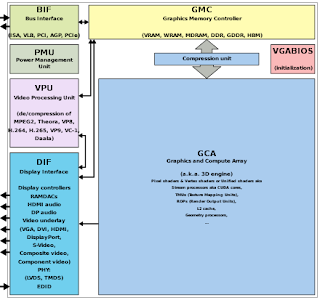graphics processing unit (GPU)


What are different types of languages ?
Ans: Mainly there are two types of computer languages.
1. Low Level Computer Languages :
These are machine codes or close to it. Computer cannot understand instruction given in high level languages or in English. It can only understand and execute instructions given in the form of machine languages i.e. the binary number 0 and 1.
There are two types of low level computer language.
Machine Language :
The lowest and most elementary language and was the first type of programming language to be developed. Mache language is basically the only language which computer can understand. In fact, a manufacturer designs a computer to obey just one language, its machine code, which is represented inside the computer by a string of binary digits (bits) O and 1. The symbol O stand for the absence of an electric pulse and 1 for the presence of an electric pulse. Since a computer is capable of recognizing electric signals, therefore, it understands machine language.
The set of binary codes which can be recognise by the computer is known as the machine code instruction set. A machine language instruction consists of an operation code one or more operands. The operation code specifies that operation that is to be performed e.g. read, record etc. the operands identify the quantities to be operated on e.g. the numbers to be added or the locations where data are stored.
But, it is almost impossible to write programs directly in machine code. For this reason, programs are normally written in assembly or high level languages and then are translated in the machine language by different translators.
Advantages :
1. It makes fast and efficient use of the computer
2. It requires no translator to translate the code i.e. directly understood by the computer.
Disadvantages :
1. All operation codes have to be remembered.
2. All memory addresses have to be remembered.
3. It is hard to amend or find errors in a program written in the machine
language
4. These languages are machine dependent i.e. a particular machine language can be used on only one type of computer.
Assembly Languages :
It was developed to overcome some of the many inconveniences of machine language. This is another low level but a very important language in which operation codes and operands are given in the form of alphanumeric symbols instead of O's and 1's.
These alphanumeric symbols will be known as mnemonic codes and can have maximum up to 5 letter combinations e.g. ADD for addition, SUB for subtraction, START LABEL etc. because of this feature it is also known
as "Symbolic Programming Language".
This language is very difficult and needs a lot of practice to master it because very small English support is given.
This symbolic language helps in compiler orientations.
The instructions of the assembly language will also be converted to machine codes by language translator to be executed by the computer
Advantages:
1. It is easier to understand and use as compared to machine language
2. It is easy to locate and correct errors
3. It is modified easily
Disadvantages :
1. Like machine language it is also machine dependent
2. Since it is machine dependent, there programmer should have the knowledge of he hardware also.
Computer High Level Languages :
high level computer languages give formats close to English language and the purpose of developing high level languages is to enable people to write programs easily and in their own native language environment.
8. It is independent of the machine on which it used i.e. programs developed in high level language can be run on any computer.
Comments
Post a Comment